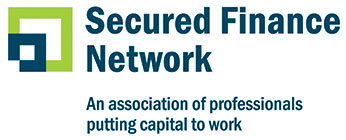- ABL Market Update – Q3 2025: Resilience in the Face of Macro Bifurcation
- SFNet Releases Q3 2025 Asset-Based Lending and Confidence Indexes
- The All-You-Can-Eat Borrowing Base
- SFNet’s 81st Annual Conference: Innovations and Trends Shaping the Future
- Hello to SFNet's New Emerging Leaders Committee Chair, Boudewijn Smit
Interview with Jim Hudak, President - Commercial Finance, First Citizens Bank
March 5, 2024
By Eileen Wubbe

In June 2023, First Citizens Bank named noted commercial banking executive Jim Hudak as president of its Commercial Finance group, which it acquired in its merger with CIT Group in early 2022.
With more than 20 years as a commercial finance executive, Hudak is known throughout the industry for his leadership capabilities and strong commitment to client support and satisfaction.
Hudak oversaw CIT's commercial finance businesses from 2008 to 2019, during which time many grew to become leading lenders in their industry verticals.
Today, settled back into an expanded version of the role he once occupied, he discusses the state of the business, the impact of the First Citizens merger and his strategy for 2024 and beyond.
TSL: It’s been two years since the First Citizens/CIT merger and six months since First Citizens extended its brand to cover numerous commercial business verticals. Now that everything is finalized, how has the merger helped benefit First Citizens and the Commercial Finance verticals that you lead?
Jim Hudak: What has been fantastic about the merger is what a great fit First Citizens and the former CIT have turned out to be. First Citizens has strength and a stable deposit base and a long-term, relationship-oriented vision. The CIT side had commercial lending expertise that is outstanding in the sectors where we operate. Taken together, the combined bank is so much more than the sum of its parts and our clients are already reaping the benefits.
Today, we are a $200 billion-plus bank in terms of assets. We don’t look like a lot of our peer group because our commercial bank is quite specialized, especially with Silicon Valley Bank (SVB.) I consider that to be a huge competitive advantage. We have a fortress-like balance sheet with long-term stable deposits, but we are also going deep into certain specialized industry verticals. Now that we have scale, we can better leverage those specialties. It’s a very exciting opportunity and one of the main reasons I came back. It’s also a great value proposition to offer our clients.
We’re very pleased to be fully integrated with CIT Commercial Finance officially becoming First Citizens Commercial Finance back in October. The transition was done in a very graceful way. For nearly two years after the merger, the CIT name continued in use before we fully went over to First Citizens. It gave us a period of time to talk to our clients, tell them what was happening, and then start leveraging the new name. At this point, there’s still a little more to do related to the mechanics and the plumbing, such as getting the loan systems all tied in. But the remaining integration is all internal. From our clients’ perspective, it's been very seamless.
How has your approach to the market changed over time as the Commercial Finance group has expanded?
We have always tried to stay in the places where we can make the most difference in the market. We want to be relevant. We have critical mass now that we’re roughly four times the size we were only a couple of years ago. That positions us to understand industry trends and move quickly to meet the ever-changing needs of our clients and the market. Let me give you some examples.
Commercial Services, which is our factoring group, has dominated that space for many years. So, we looked at ways to take that experience and our client relationships and augment them. That led us to put in a new supply chain finance component, which takes advantage of the infrastructure Commercial Services built out over decades and leverages it to deliver a new capability to clients.
We’ve also gone back into some of the industry verticals and really reenergized a couple of places. In our Maritime group, for instance, we have plenty of asset valuation experience. We’re good at understanding how discrete assets fit into an industry, how we can finance them, and how macro-economic factors can affect asset values. But we needed to get to a certain size and scale to be meaningful there. So, we’ve grown that vertical over the last two years to where it now has very good critical mass and has reemerged as an industry leader.
Meanwhile, we have continued to evolve in other key areas. I can’t cover them all, so let me just offer just a few quick examples. Our Energy Finance group is a leader in financing utility-scale solar power installations. More recently, it also became a first-mover in financing battery energy storage systems that make renewable power more efficient and reliable. Our Healthcare group has added a strong presence in financing medical office buildings. And in the fast-moving tech space, our Tech Media and Telecom group continues to grow as a major player in financing everything from cell towers to being a market leader in financing data centers.
The key to specialization and being in certain industries is knowing the client base and where the industry is going -- and then staying ahead of that. But when you’re deeply specialized, you sometimes give up some general opportunities. That’s why another important thing First Citizens has done is create a whole new middle market lending practice.
Our Middle Market Banking group has its own fleet of bankers out on the street on a national basis, often unearthing opportunities that our verticals might’ve missed. We have great expertise in our verticals, but we have a lean, targeted sales force. So, now we have support from our Middle Market Banking colleagues who cover the market on a more generalized basis.
The Middle Market Banking group also really helps us with clients through their product knowledge. Commercial Finance always had great financing solutions, but with First Citizens we can now offer a host of other banking products. Our middle market bankers help us with that because their DNA is incredibly client-centric and relationship focused. They’re not just focused on how we use our balance sheet. It's also about how we tie in all the other products and develop a much deeper relationship with the customer.
Please give an overview of all the groups you manage.
In terms of the major Commercial Finance groups, they include: energy, healthcare, technology, media, and telecom, aerospace and defense, maritime, commercial services and commercial real estate.
There are also a lot of sub-industries when you get into those verticals. Certain products -- such as our asset-based lending product, our capital equipment finance product and our cashflow product -- are layered across all those verticals. Aerospace and Defense, for instance, has some parts of the business that require a leveraged cashflow solution, and then there are parts of the business that are more asset-based or asset-backed. We take those products and layer them across the industry verticals that fit the specific client’s need. That’s what makes us unique.
Cutting across all of this is our capital markets team, which enables us to underwrite larger transactions and distribute risk. If our client needs a deal that is greater than what we’re willing to do from our own balance sheet, we have the expertise and industry knowledge to expertly structure it by involving other lenders, thereby growing with our own clients and staying relevant.
We also have outstanding specialized capital markets expertise. For example, the person who’s doing capital market deals in healthcare is a healthcare finance specialist. That matters to our clients because they don’t want a generalist to syndicate a healthcare deal; they want somebody who knows the business and how to make sure the deal gets done with the right, knowledgeable investor base. One of the most important things that we can do for our client is certainty of execution. So we’ve lined up the industry verticals with industry specialists on our capital markets team. That’s very powerful combination when we’re trying to grow with our clients.
What’s the relationship like with your new colleagues in SVB ?
We’re early in this process but our working relationship with our SVB colleagues is really great. SVB is a natural fit culturally and a real complement to what we’re doing in Commercial Finance.
I knew this would work well because I’ve done business with SVB for many years and we’ve partnered in each other’s deals. SVB is typically more involved on the innovation side and in earlier stage technology. A big part of their focus is on smaller companies and smaller middle-market companies that are a big part of what drives the economy. Similarly, CIT has always been a premier middle-market financing source. We aren’t as early stage, but we too target companies that are critical to economic growth.
There’s also a certain resiliency that we share in common with SVB. Obviously, they went through what happened in March 2023. But the remarkable thing is a lot of the clients they had before are the same clients they have now. It’s a testament both to their resiliency and the important role that they play in the innovation economy.
CIT went through something very similar during the 2008 financial crisis. We too came out of that with a lot of our client base intact, which reflected the critical role that we filled for middle-market customers. So, having that common background of who we serve, the part of the economy we play in, and a legacy of resiliency has actually made it easy for us and SVB to understand each other.
Recently, we moved a few hundred SVB employees into the former CIT offices at 11 West 42nd Street where Commercial Finance is based. It’s been great to be physically together, all in the same building, getting to know each other. We see the capabilities they have, they see the capabilities we have, and we’re extremely complementary.
How do you create market awareness for your different ABL and trade products including ABL, Commercial Services and CIT Northbridge?
Particularly when you’re talking about asset-based lending and commercial services, there’s a 50-, 60-, 75-year history for the CIT brand name and a lot of people gravitate to it. Even though we’ve largely transitioned to the First Citizens brand, it’s an easy story to tell our client base. They immediately know First Citizens was the bank that bought CIT and later SVB. It resonates with a lot of our clients.
Also on the ABL side is CIT Northbridge Credit, a joint venture between CIT and Allstate. There are certain deals that won’t precisely fit into a regulated bank’s risk appetite. So, because CIT Northbridge is a joint venture outside the bank, we can still satisfy some clients when they need financing but we can’t get it done in the bank. CIT Northbridge is a great answer for our ABL clients who need a more flexible solution.
And because we’re four times the size we used to be, we can deliver much better for our ABL clients across the portfolio. We now also have a broader product set than we ever had as standalone CIT. I can’t think of a better steward than First Citizens, with its long-term thinking and stability, to enable us to focus and grow with our clients.
What are your main goals and priorities for 2024?
For starters, we have to complete the integration of all three institutions: First Citizens, CIT and SVB. A tremendous amount has been accomplished already, but it’s a large and complex integration that will be under way for some time to come.
From an internal perspective, it’s been a nice journey. With all three institutions, there are a lot of complementary products, knowledge, expertise and relationships. So, part of 2024 is becoming even more familiar with what our combined institutions can deliver. Each individual institution -- whether that’s First Citizens, SVB or CIT – had a specific set of products and services they could deliver. On a combined basis, we really fill out that product suite.
And then it’s about taking all that to the marketplace. We’ve now closed deals that neither CIT nor SVB could have done alone. On a combined basis we’re more powerful to the client base.
2024 also will be about learning. We need to learn more about how we can exploit the critical mass that didn’t exist two years ago. We’re finding more and more hidden gems that we didn’t even think of when Silicon Valley Bank was first acquired. From the legacy CIT side, we’re learning more about how stable First Citizens is, how sticky their deposit base is and how loyal their depositors are. That gives a much firmer footing when we’re running for business, and it gives us more confidence in delivering and executing on transactions.
So far, we’ve barely scratched the surface. I anticipate many years of growth by better leveraging the capabilities of all three institutions.
What are your thoughts on the current economic climate, and how do you see it impacting your Commerical Finance group and the broader financial industry in 2024?
I could probably give you about 10 different answers on economic conditions. In over 35 years, I’ve never seen an economic cycle like this before. It’s very hard to predict. But I do know that the job market is solid, the growth that we’re seeing with customers is very strong, and the demand for loans is excellent. While I don’t feel there’s any great recession imminent, I do feel that we’re well positioned from a portfolio perspective.
When you run a group of industry verticals, you have to remember that you are always going to experience some volatility. Being in the energy business, the maritime business and others, these industries will experience highs and lows due to many economic variables. It’s imperative to have a platform where you can continue doing business through all parts of the cycle. In fact, down times are actually where the best deals are closed. We have forged our strongest relationships when we have been able to support clients when they were struggling.
This is a unique opportunity. We can actually leverage our strength and fulfill our customers’ demand, even if the economic conditions are sub-optimal. We have resiliency and long-term thinking in this company and make very good decisions. That is going to be a great thing for our clients.


.jpg?sfvrsn=f1093d2a_0)
